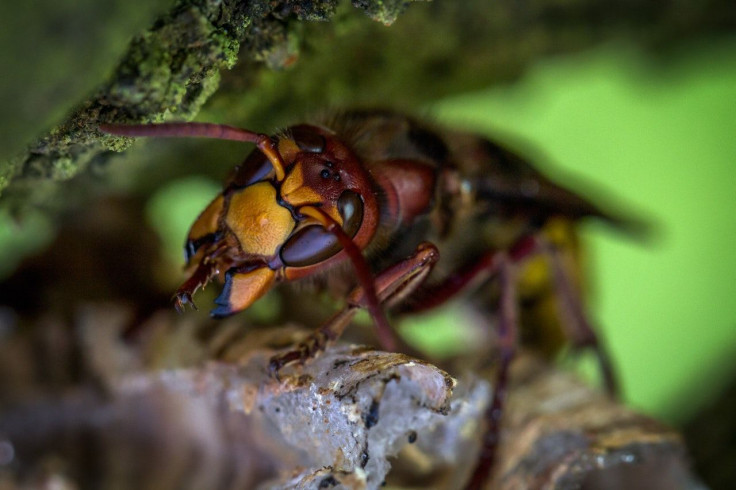Video Of Murder Hornet Killing A Mouse Shows How Dangerous These Insects Are

KEY POINTS
- A single murder hornet viciously kills a mouse many times its size
- The harrowing moment is captured on video
- Reports say these murder hornets have been sighted in several US states
Giant Asian hornets, referred to by entomologists as Vespa Mandirinia, have been spotted in several areas in the United States. This has raised some concerns, especially among beekeepers who know that the honeybees they have, which are mostly European, are defenseless against murder hornets. On top of that, these giant wasps have been known to kill an average of fifty people a year in some Asian countries.
The giant hornets have also been known to sting their victims up to 200 times at once. To gain an insight into just how deadly these hornets can be, a video has surfaced of the murderous wasp killing a mouse in just a few seconds.
A Nightmarish Spectacle
Interest in the murderous wasps has been growing since they were spotted in several areas in the United States. Entomologists fear they might spread across the U.S., posing danger not only to the already declining honeybee population but also to humans, particularly those with allergies.
The video, which is said to have been posted in 2018, shows a single murder hornet stinging the helpless mouse several times. In just a few seconds, the video shows a twitching mouse that appears to be dying, perhaps from the multiple doses of venom that the murder hornet delivered.
A Lethal Dose
Bees have reportedly been known to cause people severe allergies, which can lead to their deaths. Entomologists say anywhere between 1,600 and 1,760 stings could kill a person weighing 160 lbs. With murder hornets, however, entomologists say they can deliver almost seven times the amount of venom compared to honeybees.
Murder hornets can also sting multiple times. Entomologists say 20 stings on a non-allergic, 160-pound person already require medical care, and 30 stings on a person of the same weight would already require emergency medical assistance. Imagine the effect of the same number of stings on an allergic person or on a small rodent weighing much, much lesser.
A Murderous Wasp On The Loose
According to entomologists, giant hornets can often be found deep in the forests of some Asian countries. Their quarter-inch-long stinger can deliver potent and often lethal venom, to its prey. Reports say they can kill and decimate an entire honeybee colony in a few hours by using their huge jaws to dismember bees at dizzying speed.
Entomologists say murder hornets have been known to kill 30,000 bees in a few hours. The video of one of these giant wasps killing a mouse several times its size shows how fast and lethal they can be. It even got one Internet user saying that the streets may never be safe with these murderous wasps on the loose.
No Defense Mechanism
After being spotted in Washington in December of 2019, beekeepers have been asking for advice from entomologists. They know that their honeybee stock has not developed any defense mechanisms against these deadly hornets yet, unlike their Japanese counterparts, which have developed a ‘cooking defense’ against the wasps.
An entomologist from Tokyo told Smithsonian Magazine that it is not just the honeybees that those in the U.S. need to worry about. He said that the murderous wasp’s sting can cause damage to the human tissue and is particularly dangerous to those with allergies. Worse, their venom seems to act as a magnet to other giant hornets, according to Anthony “Tony Bees” Planakis, a retired New York Police Department officer and now a beekeeper. In an interview with The Post, Planakis said, “the worst thing anyone can do with these things is killing them. That scent is going to be airborne, and the rest of the hive will come.”
© Copyright IBTimes 2024. All rights reserved.





















